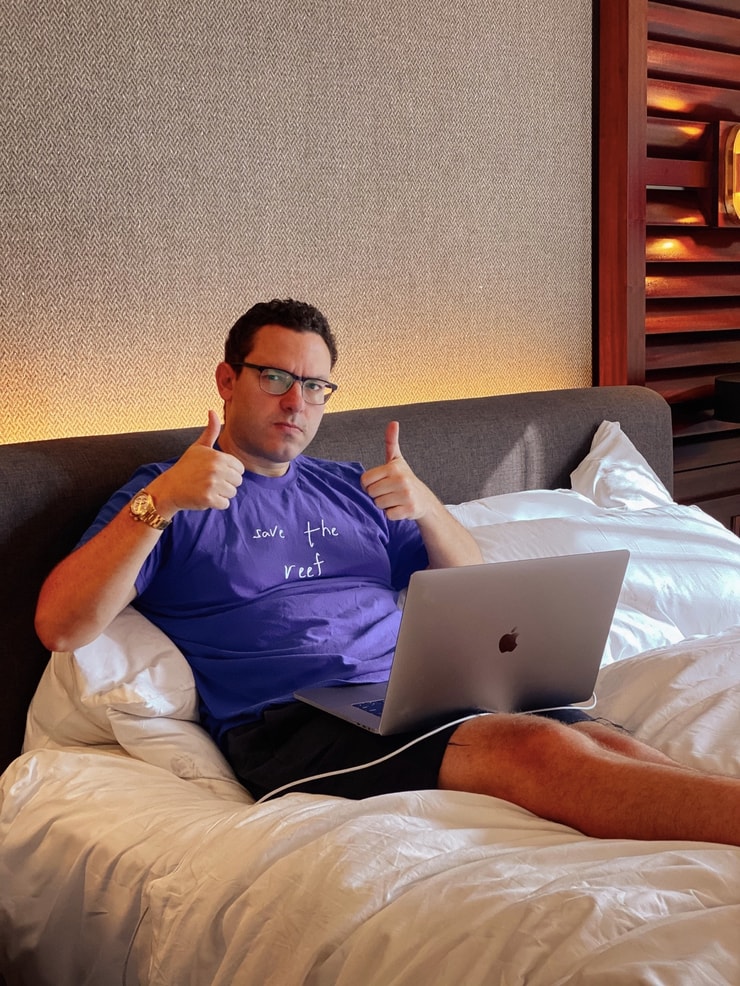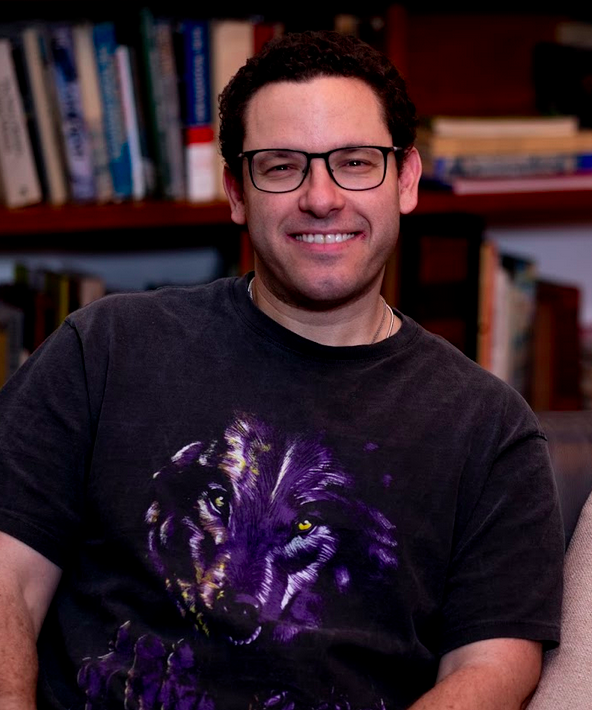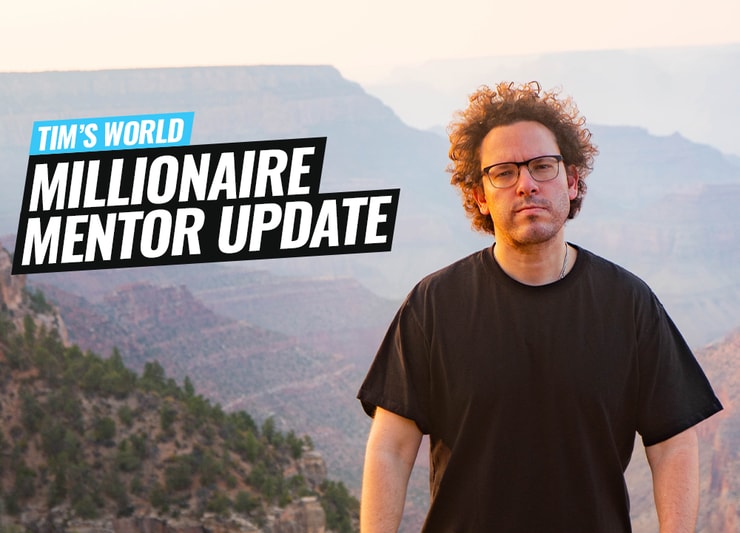In this edition of the update, we’ll focus on high-volatility stocks. Also in this edition…
- What NOT to do if you miss a trade.
- What’s the right time to look for morning panic dip buys? (Because not every morning panic is the same…)
- Why one of my top upcoming students decided to take a step back from the stock market.
- And exciting news from my charity Karmagawa.
I’m checking in from Bali this week.
I’m ready to tackle the new week with this insanely green view! Are you ready? pic.twitter.com/naEF95Cccr
— Timothy Sykes (@timothysykes) February 23, 2020
More on that in just a moment. First, a roundup of what happened last week in Australia.
Table of Contents
Charity Is Worth It, but It’s Not Easy
Australia was both good and bad. Let me explain…
We met with a lot of different animal sanctuaries. And we spent time with a lot of animals uprooted by the recent bushfires. Unfortunately, money isn’t getting to the sanctuaries fast enough. And that’s a problem because the animals are suffering.
The animals need the money right now. They need food and veterinary care. Desperately.
But check this out…
Red tape is one of the biggest issues right now. Charity is a strange world of laws, regulations, and layer upon layer of bureaucracy.
$52 Million in Charitable Contributions Tied Up in the Courts
If that sounds a little crazy … I agree. It’s a nasty situation. Comedian Celeste Barber started a fundraising campaign on Facebook. It turned into the biggest fundraising campaign in Facebook’s history.
Her original goal of $30K raised $52 million for the New South Wales Rural Fire Service. (NSW RFS) Because the campaign raised so much money, she decided to spread it around to more charities.
Unfortunately, there are laws against that. It’s complicated. So NONE of the money has gone toward helping victims or firefighters. Instead, it’s all tied up in a legal snafu. They’re even considering asking for guidance from the NSW Supreme Court.
There’s a lot of controversy. Charity isn’t as simple as you want it to be. And sadly…
… the victims suffer. It’s the animals and families affected by these devastating bushfires.
I’ll update you next week about the charities Karmagawa is supporting. We’re also experiencing a bit of red tape. But we’ll get there in the end.
Now for some exciting Karmagawa news…
Karmagawa Opens Three New Schools in Bali
We just opened three new schools in Bali — we’re now up to 70 schools and libraries worldwide.
While it’s exciting to open these new schools and we’re very proud, we constantly ask ourselves…
More Breaking News
- BULL Anticipates Strong FY Earnings Amid Strategic Moves
- Futu’s Strategic Moves Boost Investor Confidence Amid Market Shifts
- Why Viking Therapeutics Stock May Skyrocket
How Can We Serve Better?
A lot of the kids in these communities have to walk to school. Sometimes up to three hours. That shows you how much they value their education. But sadly, during the rainy season, they can’t go to school.
So during the rainy season, many kids just don’t get an education. That’s not cool, so we decided to do something about it. We’re working to help communities get buses so the children can get to school — even during the rainy season. I’ll have more details about that soon.
Working Toward Our Goal of 1,000 Schools
My goal is to build 1,000 schools. So 70 schools doesn’t sound like much. But each school has a few hundred kids. And some of the communities run morning school and afternoon school. The community is so big they split it. At last count, there were around 33,000 kids attending our charity schools.
We’ll get there in the end. Just like trading, big things start small…
Trading Lessons of the Week

2025 Millionaire Media, LLCIn August 2016, my first school in Bali opened. So in less than four years, we’ve gone from zero to 70. How? One school at a time. I started trading the same way. Scalability is something I know about. Turning a few thousand into several million taught me a lot about scaling up.
Which is why as a trader I recommend that you…
Start Small
Most of my students start with a small account. (Including my top students.) Some start as small as $1,000 or $2,000. Their friends and family ask why they study so much. “You’re only making $50 on a trade? Why keep going?”
What they don’t understand is that you can scale up the same process you use to make $25 or $50 on a trade later on. Then, with the same process, it’s possible to make a lot more. Yes, there are limitations to my strategies and it’s not gonna be easy.
Even starting small, some students still have to start over. Tim Grittani lost the first $1,500 he used to fund his trading account.
“Strength shows not only in the ability to persist but in the ability to start over.” —F. Scott Fitzgerald
— Timothy Sykes (@timothysykes) February 21, 2020
If you haven’t read “The Complete Penny Stock Course” … do it. It’s a must-have book to learn the basics of my strategy. (Hint: pay particular attention to Chapter I:3 — STOP NOW! for more reasons why you should start small.)
Don’t Feel Bad if You Miss a Trade
Don’t feel bad if you miss a trade. I missed a few trades last week. Sometimes my schedule gets in the way. Teaching, creating video lessons, charity work — each takes time away from trading.
Again, trading isn’t an exact science. One of the trades I missed last week was a morning panic that didn’t bounce the way I wanted. And when it did bounce, it wasn’t at the time or price I wanted.
How far did it bounce? 50% in roughly an hour. So even though I missed it, I was on the right track. So I don’t feel bad about missing it. Again, the bounce happened later than my preferred time for that pattern.
When something doesn’t fit your pattern, remember…
Sometimes the Best Trade Is No Trade
Two of my top upcoming students, Jack and Kyle, had small losses last week. Kyle even mentioned sizing down or stepping back from the market for a while to get some clarity.
Every few months I have a rougher day and usually bounce back quickly once I reflect and move forward:
March 18th: -$1506
July 3rd: -$1162
October 9th: -$1295
Today: -$1585It sucks but each time I learn to handle it better. It’s a part of the game and my system.
— Kyle Williams (@traderkylec) February 19, 2020
Keep in mind both Jack and Kyle reported making over $10K the week before last.* So my top students are saying “Wait a minute, everything’s a little choppy right now.” And they’re being careful. Don’t feel like you need to trade every day. Sometimes the best trade is no trade.
*Students’ results are NOT typical. Roughly 90% of traders lose. Always remember trading is risky, and never risk more than you can afford.
Let’s get on with some…
Trading Questions from Students
“Tim, in a recent watchlist you referred to three stocks as second-tier spikers. You said, ‘I prefer more volatile stocks as that gives me more wiggle room for trades.’ What are you looking for in high-volatility stocks?”
First, I was talking about Happiness Biotech Group Limited (NASDAQ: HAPP), Blink Charging Co. (NASDAQ: BLNK), and Pluristem Therapeutics Inc. (NASDAQ: PSTI). These stocks were up roughly 10%–20% on the day.
That’s decent. But I want 30%, 40%, 50% … even 100%. It’s tough to squeeze in a trade when the stock only goes up or down 10% or 15%.
So focus on the percentage gain. The reason I focus on percentage gain is that it can be more accurate. With low-priced stocks, what doesn’t seem like a big move can actually be big. Like when a stock runs from 2 cents a share to 20 cents a share in a few days.
So the big percent movers — the high-volatility stocks — give me more wiggle room. They tend to fit my patterns better. You can focus on taking the meat of the move and still have a decent gain.
Now for the final question in this edition of the update…
“In a recent Trading Challenge webinar you said not every morning panic qualifies as a dip buy. Please explain why.”
Again, you want a volatile stock. Focus on high volatility.
Morning panics are really for stocks that have spiked for three to six days in a row. Not just a stock that’s up one day. The best panics happen on day five or six. Sometimes even day seven. But rarely on day two or three like a lot of newbies think.
Trading Challenge
The Trading Challenge is my most comprehensive course for traders. If you’re accepted, you’ll get access to…
- Thousands of hours of archived webinars. Learn how the same patterns I traded 10 years ago are still relevant today.
- Two to three live webinars each week hosted by me and other Trading Challenge mentors. (All mentors are highly successful traders in their own right.*)
- Over 6,000 video lessons with new lessons posted every week.
- My daily watchlist of 5–15 stocks — why I’m watching and what would get me to trade them.
- Hundreds of hours of DVDs — all the essentials from over a decade of teaching. These are the foundational lessons of my strategy.
If you think you have what it takes … and a big-enough dream … apply for the Trading Challenge today.
Millionaire Mentor Market Wrap

2025 Millionaire Media, LLCThat’s it for this week. Here are a few key takeaways…
In Australia, we’re trying to help animals, but it’s not easy. A lot of the work now is to prepare for the next round of bushfires. Sadly, given climate change, the drought, and record temperatures…
… there will be more bushfires in the future. Organization is essential.
As for trading, don’t feel bad if you miss out on a trade. Trade conservatively and don’t force anything. Focus on high-volatility stocks. But not just any stock that’s moving. Focus on multi-day, multi-week runners with a lot of volatility.
One last thing…
The stock market finally reacted to the coronavirus today. In a big way. Be careful. Stay safe — both in trading and in health.
Resources for Traders
Certain questions come up over and over again. So as a reminder…
- Your choice of brokers is important. I use these brokers.
- Develop a process with a clear set of rules. I follow these rules when I trade.
- The most important rule any new trader should burn into their brain is rule #1: cut losses quickly.
- And don’t forget this completely FREE guide to penny stocks. No email address required, no personal details … nothing. It’s free. Really. Access my intro to penny stocks here.
What Students Are Saying
Here are just a few comments from students during a recent Trading Challenge webinar…
Stocksurfer1 → timothysykes: This has been a great webinar Tim. Been at this for only 10 months, and just getting comfortable with all of the information now, just have to get faster with order entries. really appreciate all that you do! Thank you…
Millerruth23 → timothysykes: gotta run, thanks for the awesome webinar. It was a very good one.
CrazyWillows → timothysykes: Thank you so much for the webinar Tim!!! AWESOME as always!!!!!
Chrisw8987 → timothysykes: thank you Tim great lesson today.
TonyG1 → timothysykes: Thanks Tim…Good Webby! Cheers.
What do you think of this edition of the update? Comment below — I love to hear from you!











Leave a reply